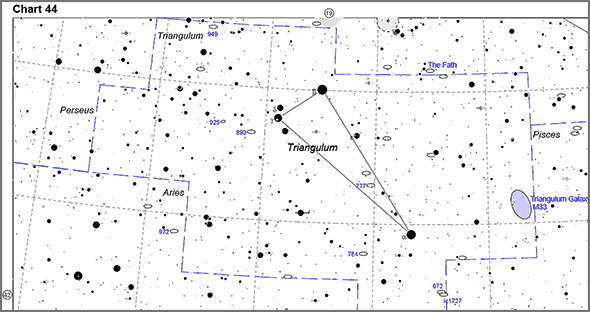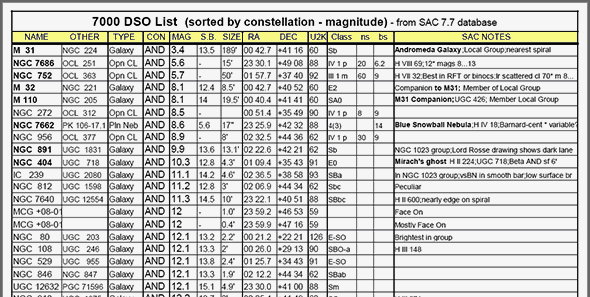Star Atlases

Sky Calendar
My first pick for those just beginning their adventure into astronomy is not a traditional star atlas, but a Sky Calendar. After many years of experience, my first choice for a quick reference of what constellations, and planets are visible at any given time the time-proven Sky-Calendar.
A Sky Calendar, as its name implies is a sheet for each month that takes the form of a calendar. Diagrams track the Moon’s position, the planets and bright stars along with notable groupings of sky objects. The Sky Calendar is a great quick reference for beginners and advanced amateur astronomers alike.
The Sky Calendar that I go to first is called Sky Maps. It is a free download and while most star atlases contain thousands of stars, the Sky Calendar shows only about the brightest 400 or so, depending on the month. That number works well for beginners or for those who observe under moderate light pollution.

Mag-7 Star Atlas
The Mag-7 Star Atlas, created by Andrew L. Johnson plots stars down to Magnitude 7.25, with double / multiple stars indicated by a thin horizontal bar. Plotted DSO’s (Deep Sky Objects) include all objects on The Messier list, the RASC’s finest NGC list, and the Herschel 400 list — more than 550 DSO’s in total. There are 20 primary charts and one supplemental chart (11a for the Virgo Coma Berenices region) comprising the complete Mag-7 Star Atlas.
Beginners and intermediate observers alike will find some use for these charts — as a first atlas, as a bridge atlas between planisphere, or monthly sky calendar, and a deeper atlas. With stars ploted down to magnitude 7.5, and 550 deep space objects, these charts are ideal for use as a binocular, or small telescope atlas, and as printable charts for outlining observing plans and/or recording small field notes.
But Free? Really?
Yes, and not just free of charge — you have other freedoms as well. This work is licensed under a Creative Commons License. Basically you are free to download, use, and or distribute this work for non-commercial purposes with appropriate attribution. You can create and distribute derived works if they follow the same license. (Creative Commons License. )

Deep-Sky Hunter Star Atlas
For the advanced observer we offer the Deep-Sky Hunter Star Atlas. This atlas a printable field guide and an observing list of deep-sky objects. It provides basic information about 7000 objects (up to magnitude 14) and features additional 650 select DSO, with negative thumbnail images.
Deep-Sky Hunter Star Atlas is a new, comprehensive deep sky atlas, designed for serious deep sky observers. It features: DSO down magnitude 14, stars down to 10.2, 101 charts (entire sky), 21 “zoom” maps, indications of 500 best objects, dark and bright nebulae, common names, detailed objects list. Note: This atlas is designed for A3 pages. Consider “The Sky” atlas if you prefer A4.
This sky atlas was made using the SAC database as main source of data, excluding objects with declination lower than -60º (south). Most of the images were taken from “NGC/IC project” site, and a few of them are from other sources.

Illustrated DSO Guide
Illustrated DSO Guide – Full (single PDF file, 22MB, 160 pages). Includes: cover page, thumbnail images of best ~650 DSO sorted by name, list of best ~650 DSO sorted by constellation-magnitude, list of 7000 DSO sorted by name. Observing list of 650 best deep-sky objects, with thumbnail images and some basic information. The list is sorted by constellation and magnitude (sorting by name is also available). List includes all Messier, Herschel, Caldwell, SAC’s best of NGC, and ~150 additional DSOs.
List of 7000 deep sky objects under magnitude 14 (which, under dark skies, are in reach of a moderate telescope). The list provides basic information about each object: magnitude, number of stars, page in Uranometria 2000, comments, common name, etc.
